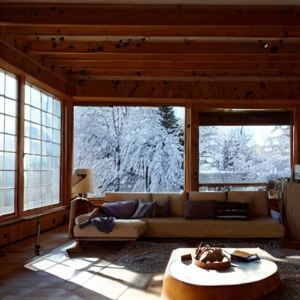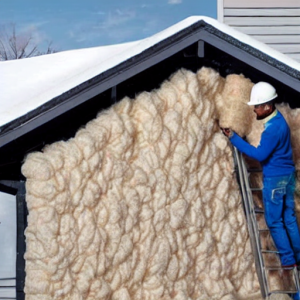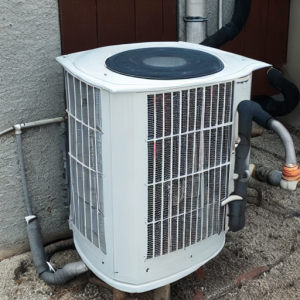Create a Warm and Inviting Winter Retreat While Reducing Energy Costs
As the frosty winter months approach and the landscape is transformed into a beautiful blanket of frost, the desire to find solace in the warmth and comfort of your home intensifies. Yet, the increasing costs associated with heating can present challenges for budget-conscious individuals. Fortunately, there are a multitude of energy-efficient strategies that enable you to craft a winter haven without straining your finances. This guide will equip you with practical, actionable advice and proven techniques to maintain a cozy atmosphere in your home, ensuring that your energy expenses remain under control throughout the chilly season.

Boost Your Home’s Energy Efficiency by Detecting and Sealing Air Leaks
A substantial amount of heat loss occurs in homes due to unnoticed air leaks. By identifying and sealing these gaps, you can dramatically enhance your home’s energy efficiency while significantly cutting down on heating expenses. This thorough guide will offer you effective methods to locate and rectify air leaks around vents, windows, and doors:
- Windows:
- Inspect for Drafts: On windy days, take the initiative to meticulously check the edges of your windows for any drafts. Utilize a candle or incense stick to detect subtle air movements that can indicate leaks, helping you identify areas that require attention.
- Apply Weatherstripping: Use weatherstripping materials such as adhesive-backed foam or V-strip to create an airtight seal around window frames. Selecting the appropriate type based on your window design is vital for effective insulation and energy savings.
- Doors:
- Check for Gaps: Carefully examine the edges of your doors for visible gaps that may allow cold air to enter. A well-lit room at night can help highlight any leaks through these openings, making them easier to address.
- Install Door Sweeps and Weatherstripping: Utilize door sweeps at the bottom of doors to block drafts and apply self-adhesive weatherstrips along the sides to effectively seal any gaps that jeopardize energy efficiency.
- Vents and Ducts:
- Seal Ductwork: Ensure that your ductwork is properly sealed to prevent warm air from escaping into unconditioned areas. Using a mastic sealer or foil tape can help secure any loose connections, thereby enhancing overall system performance.
- Install Vent Covers: Magnetic or adhesive vent covers can effectively control airflow, minimizing drafts in less frequently used rooms while preserving the comfort in the rest of your home.
- Caulking and Sealant:
- Inspect Exterior Walls: Examine the outer walls of your home for any cracks or holes. Applying caulk or sealant to fill these gaps will prevent air and moisture intrusion, contributing to enhanced energy efficiency.
- Select the Right Sealant: Choosing the appropriate sealant based on the location and material is crucial. Silicone is effective for flexible joints, while acrylic caulk is ideal for indoor applications.
- Utilize Draft Stoppers:
- Place Along Door Bottoms: Employ draft stoppers, also known as door snakes, to block cold air from entering through the bottom of doors. These fabric tubes can be easily positioned or removed as needed, providing a swift solution to chilly drafts.
- Seek Professional Assistance:
- Consider Energy Audits: Hiring a professional for an energy audit can be highly advantageous. Experts utilize advanced tools, such as thermal imaging cameras, to identify hidden leaks and recommend tailored solutions for your home.
Regular inspections and prompt repairs of discovered air leaks not only enhance your home’s overall comfort but also significantly boost energy efficiency. By proactively sealing these gaps, you can lower your energy bills and create a more inviting living environment throughout the winter months.
Utilize Natural Sunlight to Maximize Warmth and Ambiance in Your Home
 Harnessing natural sunlight during the winter months can significantly enhance both the warmth and ambiance of your living spaces. Here’s a detailed exploration of effective strategies to make the most of daylight and create a cozy atmosphere:
Harnessing natural sunlight during the winter months can significantly enhance both the warmth and ambiance of your living spaces. Here’s a detailed exploration of effective strategies to make the most of daylight and create a cozy atmosphere:
- Daylight Utilization Strategies:
- Strategic Curtain Management: Keep curtains and blinds wide open during daylight hours to allow natural sunlight to flood your living areas. Position them to fully expose windows and let sunshine penetrate deeper into your rooms, maximizing both warmth and brightness.
- Choose Sheer Fabrics: If privacy is a concern, consider using sheer curtains that allow sunlight to filter in while still providing some level of seclusion. The diffusion of light through sheer materials creates a warm and inviting atmosphere in your home.
- Solar Heat Gain:
- Understanding Solar Heat: Sunlight entering your home can contribute to solar heat gain, particularly through south-facing windows that receive more sunlight during winter. This can be advantageous for warming your space without incurring additional heating costs.
- Utilize South-Facing Windows: Prioritize opening curtains and blinds on south-facing windows to maximize sunlight exposure, especially beneficial in chillier climates where every ray counts.
- Nighttime Heat Retention:
- Close Curtains at Night: As temperatures drop in the evening, drawing your drapes and blinds helps insulate your home, preserving the warmth collected throughout the day. Opt for heavier drapes or those with thermal lining for optimal insulation.
- Invest in Insulated Window Treatments: Consider adding insulated drapes or shades to further minimize heat loss, creating an additional barrier against cold air infiltrating your living space.
- Ambiance and Well-Being:
- Enhance Indoor Lighting: Natural sunlight not only warms your home but also improves indoor lighting quality, reducing reliance on artificial lighting during the day. This can lower energy consumption and positively impact your electricity bills.
- Incorporate Biophilic Design: Exposure to natural light has been linked to improved well-being. Allowing sunlight into your living areas can positively influence your mood and productivity levels, creating a more enjoyable home environment.
- Window Maintenance:
- Clean Windows Regularly: Ensure that windows are cleaned frequently to maximize sunlight entry. Regularly remove dust and debris from both the interior and exterior to prevent obstructions that can limit natural light and warmth.
- Smart Home Technology:
- Consider Automated Window Treatments: Think about installing smart window treatments that can automatically open and close based on predetermined schedules, optimizing sunlight exposure and heat retention without manual adjustments.
By incorporating these tactics into your winter routine, you allow yourself to fully leverage the benefits of natural sunlight, crafting a warm and inviting ambiance in your home while enhancing energy efficiency. By optimizing window treatments and understanding solar heat gain, you can significantly improve comfort and atmosphere during the colder months.
Achieve Maximum Energy Efficiency with Effective Insulation Techniques
 Proper insulation is crucial for minimizing heat loss and improving the overall energy efficiency of your home. Developing a comprehensive insulation plan that focuses on key areas such as the attic, walls, and basement will lead to a warmer and more cost-effective living environment during the chilly winter months.
Proper insulation is crucial for minimizing heat loss and improving the overall energy efficiency of your home. Developing a comprehensive insulation plan that focuses on key areas such as the attic, walls, and basement will lead to a warmer and more cost-effective living environment during the chilly winter months.
Start your energy efficiency journey by evaluating the insulation levels in your attic. Adequate insulation in this area prevents heat from escaping through the roof, serving as a vital barrier. Various insulation materials, including fiberglass, cellulose, and foam board, offer different levels of effectiveness. Consulting with a professional can help you determine the most suitable insulation type and thickness for your attic to ensure optimal performance.
Next, ensure that your walls are well-insulated to create a continuous thermal envelope around your home. Proper wall insulation helps regulate indoor temperatures by preventing heat from escaping through exterior surfaces. Insulation in exterior walls serves as a buffer against outdoor temperature fluctuations, making this a priority for enhancing energy efficiency and comfort.
While insulating your basement, pay attention to both the walls and ceiling, if applicable. Uninsulated basements, which are often in close contact with the ground, can be a major source of heat loss. Use materials like rigid foam boards or spray foam insulation to effectively insulate basement walls. If the basement ceiling is unfinished, insulating it creates a thermal barrier between the basement and the living areas above, further enhancing energy efficiency.
When selecting insulation materials, consider the R-value, which measures heat resistance. Higher R-values indicate better insulation performance. However, the ideal R-value may vary based on factors such as climate, local building codes, and specific application areas, so make sure to research accordingly.
In addition to adequate insulation, ensure that your home is properly sealed to prevent air leaks that can compromise insulation effectiveness. Avoid letting conditioned air escape through gaps around windows, doors, and other potential openings to maintain a comfortable home environment.
Investing in quality insulation not only helps retain warmth but also leads to significant savings on heating bills in the long run. The initial investment in insulation pays dividends over time by reducing the need for constant heating and enhancing energy efficiency across your home.
For a thorough assessment, consider consulting insulation professionals or energy auditors. They can provide tailored recommendations based on your home’s unique characteristics, ensuring your insulation strategy aligns with both your energy-efficiency goals and the specific requirements of your living space.
Enhance Comfort in Your Home with a Programmable Thermostat
 Investing in a programmable thermostat is a forward-thinking approach to optimize your home’s energy consumption while enhancing comfort. This intelligent device allows for flexible and automated temperature control, significantly improving your comfort levels and helping you save on energy costs.
Investing in a programmable thermostat is a forward-thinking approach to optimize your home’s energy consumption while enhancing comfort. This intelligent device allows for flexible and automated temperature control, significantly improving your comfort levels and helping you save on energy costs.
Automated Temperature Adjustments: One of the key benefits of a programmable thermostat lies in its ability to adapt seamlessly to your daily schedule. By pre-setting temperature adjustments based on your routine, you can ensure that your home is efficiently heated when needed, thereby avoiding unnecessary energy waste during times when you are away or sleeping.
Energy Savings through Setback Settings: Programmable thermostats allow you to implement setback settings during periods when you are away or asleep. Lowering the temperature during these times helps prevent your heating system from overworking. According to the U.S. Department of Energy, reducing the temperature by just one degree can lead to savings of up to three percent on home heating costs, which can accumulate significantly over time.
Tailored Comfort Levels: These devices let you customize temperature settings to meet your personal preferences. You can program the thermostat to warm your home just before you return, ensuring a comfortable environment upon your arrival. This personalized approach enhances both energy efficiency and your overall satisfaction with your home’s climate.
Optimizing Heating Cycles: With a programmable thermostat, you can achieve more efficient heating cycles. The system operates with greater precision, reducing energy waste while maintaining consistent temperatures during times when your home is occupied, adjusting appropriately when it’s unoccupied.
Smart Thermostats and Connectivity: The advancement of technology has introduced smart thermostats, which offer advanced features such as remote management via smartphone apps and integration with home automation systems. These functions provide unprecedented control and energy management capabilities, allowing you to monitor and adjust your home’s temperature even when you’re away.
Installation and Compatibility: Installing a programmable thermostat is generally a straightforward process, with many models being compatible with existing heating systems. However, it is essential to choose a thermostat that fits your HVAC system and meets your home’s specific needs to maximize effectiveness.
Considerations for Usage: While programmable thermostats are highly effective, careful programming is essential to maximize their benefits. Understanding your daily schedule and adjusting the settings accordingly ensures that the thermostat operates in harmony with your lifestyle, enhancing energy savings while maintaining comfort.
Optimize Your Comfort with Layering Techniques
 To enhance your comfort during winter, consider the straightforward yet effective approach of personal layering before resorting to adjusting the thermostat. This strategy not only helps reduce energy costs but also creates a more pleasant indoor environment, giving you greater control over your comfort levels.
To enhance your comfort during winter, consider the straightforward yet effective approach of personal layering before resorting to adjusting the thermostat. This strategy not only helps reduce energy costs but also creates a more pleasant indoor environment, giving you greater control over your comfort levels.
Clothing as Insulation: Think of your clothing as an additional layer of insulation for your body. By wearing cozy sweaters, thermal socks, and comfortable slippers, you create a barrier against the cold, allowing for warmth without solely relying on heating systems. Opt for materials like wool and fleece, renowned for their excellent insulating properties, to keep you warm.
Footwear Matters: Cold feet can significantly diminish your comfort indoors. Investing in insulated slippers or warm socks is essential to keep your feet cozy. This simple change not only enhances warmth but also reduces the need to raise the thermostat temperature to counteract chilly extremities, contributing to overall energy savings.
Layering for Bedtime Comfort: Extend the concept of layering to your bedding. Instead of immediately cranking up the thermostat at bedtime, use additional blankets to create layers on your bed. Combining lightweight and heavier blankets allows you to customize the layers to your comfort needs, creating a warm cocoon for sleeping that helps retain body heat.
Understanding the Science of Layering: Layering is a time-tested technique that focuses on conserving and capturing body heat. Each layer traps warm air, enhancing overall insulation. By mimicking the natural way our bodies regulate temperature, you can maintain comfort with less reliance on artificial heating, resulting in a more sustainable approach to winter warmth.
Benefits Beyond Energy Savings: Mastering layering offers advantages beyond energy conservation. It promotes an eco-friendly lifestyle by minimizing the carbon footprint associated with higher heating needs. Additionally, layering adds a sense of coziness and control over your environment, allowing for personalized warmth that enhances your overall comfort.
Seasonal Wardrobe Transition: As winter approaches, consider incorporating additional insulating items into your wardrobe. Look for thicker fabrics, thermal undergarments, and accessories like scarves and gloves. By adapting your clothing to the changing seasons, you’ll be better prepared for a winter that is both comfortable and energy-efficient.
Mindful Thermostat Adjustments: Incorporating layering into your routine allows you to make thermostat adjustments more mindfully. Even minor changes, such as lowering the temperature by a few degrees, become achievable when paired with the added warmth offered by layered clothing and bedding, leading to greater energy savings.
Ensure Peak Performance with Routine Heating System Maintenance
 A well-maintained heating system is essential for achieving a comfortable indoor temperature throughout winter while minimizing energy expenses. Prioritizing regular maintenance and professional servicing ensures your heating system operates at peak efficiency, providing reliable warmth when you need it most.
A well-maintained heating system is essential for achieving a comfortable indoor temperature throughout winter while minimizing energy expenses. Prioritizing regular maintenance and professional servicing ensures your heating system operates at peak efficiency, providing reliable warmth when you need it most.
Furnace Filter Maintenance: Start by closely monitoring your furnace filters. These filters play a crucial role in maintaining optimal airflow, which is vital for efficiency. Clean or replace filters regularly to prevent dust and debris buildup. Clogged filters restrict airflow, forcing the system to exert more effort and consume more energy, leading to higher heating costs.
The Role of Airflow in Efficiency: Understanding the connection between airflow and heating efficiency is critical. Unrestricted airflow allows the system to distribute heat evenly throughout your home, reducing the workload on the furnace. This leads to improved comfort and decreased energy usage, thereby enhancing the overall efficiency of your heating system.
Professional Inspection and Servicing: Do not underestimate the importance of professional assistance for your heating system. Schedule a thorough inspection and servicing before winter arrives. Certified technicians can identify and address potential issues that may compromise system efficiency, ensuring you stay warm and comfortable during the colder months.
Preventive Maintenance Benefits: Investing in preventive maintenance pays off in the long run. It not only aids in the early detection and resolution of issues but also extends the lifespan of your heating system. Routine inspections ensure that all components are functioning properly, enhancing productivity and reducing the risk of unexpected breakdowns that could leave you in the cold.
Efficiency Upgrades: Consider upgrading your heating system for improved efficiency. Newer models often come equipped with advanced features designed to maximize energy efficiency. While the initial investment may seem substantial, the long-term savings on energy bills and potential rebates make this a wise financial choice.
The Article Energy Hacks for a Budget-Friendly Cozy Winter Home Was Found On https://limitsofstrategy.com


This discussion on energy efficiency couldn’t come at a better time, especially as many of us are feeling the pinch from rising energy costs. I’ve noticed that sealing air leaks is often an overlooked step in winter preparations. It’s surprising how much comfort can be gained just from a few caulking jobs around windows and doors. I once went through this process in my own home, and not only did it make a noticeable difference in temperature, but my heating bills dropped as well.
This post resonates with me deeply, especially as I prepare my home for the winter months. The idea of creating a warm, inviting space while also being mindful of energy costs is a balancing act that many of us face. It’s interesting to reflect on how our pursuit of coziness can often lead to hefty heating bills, which is why your mention of sealing air leaks is so pertinent. I’d never realized just how significant of a difference that can make until I read about it in a home improvement blog last year. After following their advice, I took a weekend to inspect the windows and doors and was shocked at how many gaps I found—especially around older frames.
I can relate so much to your experience; preparing a home for winter really can feel like a puzzle with all those pieces to fit together. It’s fascinating how something as seemingly simple as sealing air leaks can have such a big impact. I remember when I first discovered the importance of weatherproofing in my own home. I went through the same process—spending time inspecting windows and doors and finding gaps I never noticed before. It’s surprising how much those small spaces add up in terms of heat loss.
I found your insights on creating a cozy winter retreat while being mindful of energy costs incredibly relatable. As someone who has often battled the winter chill without breaking the bank, the struggle to find that perfect balance between comfort and cost-effectiveness is all too familiar.
I can totally relate to that struggle of balancing comfort and cost in the winter. It feels like every year the cold hits, and I’m running around trying to figure out how to stay warm without seeing my energy bills skyrocket. I’ve found that layering blankets and using a space heater in the room I’m in can make a big difference. It’s also a nice excuse to cozy up with a good book or binge-watch a series, which feels like a small luxury during the winter months.
Balancing comfort and cost in winter really is like trying to dance on a tightrope made of icicles, isn’t it? The moment the temperature dips, it feels like my wallet starts shivering too. Your strategy with the blankets and space heater sounds like a cozy plan. It’s true, there’s something delightful about wrapping up like a burrito and pretending the world outside has turned into a frozen wasteland while you’re nestled in your own personal comfort zone.
Your points about boosting energy efficiency through sealing air leaks hit home for me. Last winter, I discovered that the draft around my front door was practically a welcome mat for cold air. After investing a weekend in weather stripping and caulking, the difference in comfort—and my heating bill—was quite noticeable.
I really appreciate your focus on creating a cozy winter retreat while keeping an eye on energy costs. It can be so tempting to crank up the heat when it gets frigid outside, but I’ve learned the hard way that those bills can climb quickly! One of my favorite strategies has been using thick curtains to help keep the warmth in, especially in rooms where I spend the most time. It’s amazing how much of a difference it can make.